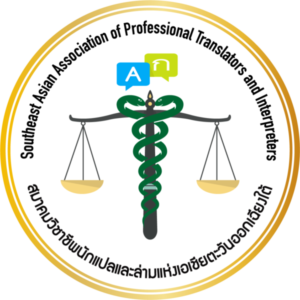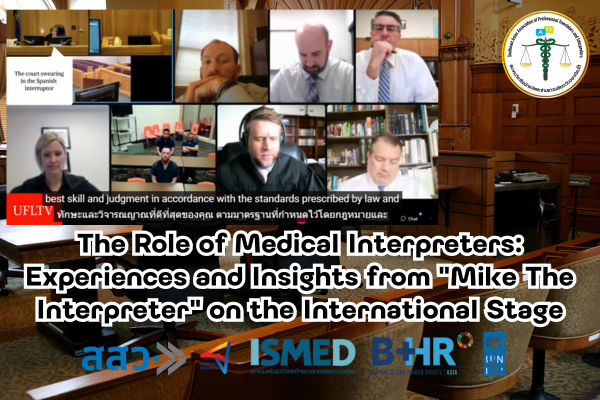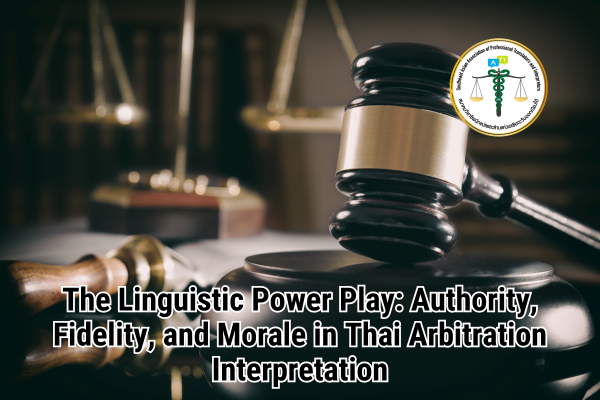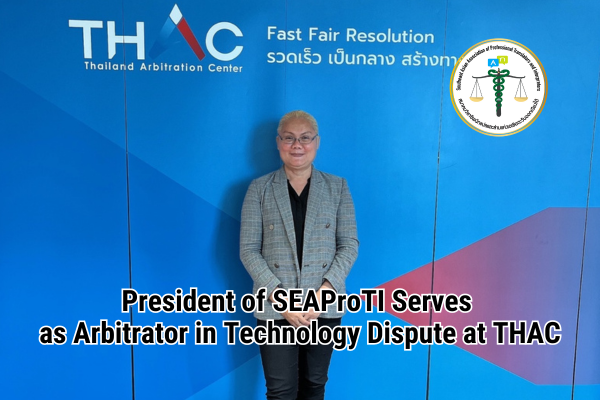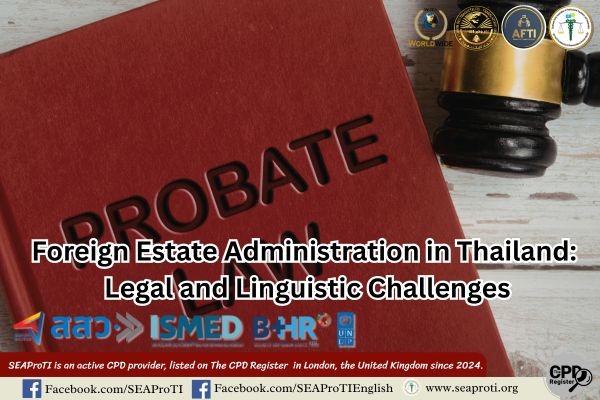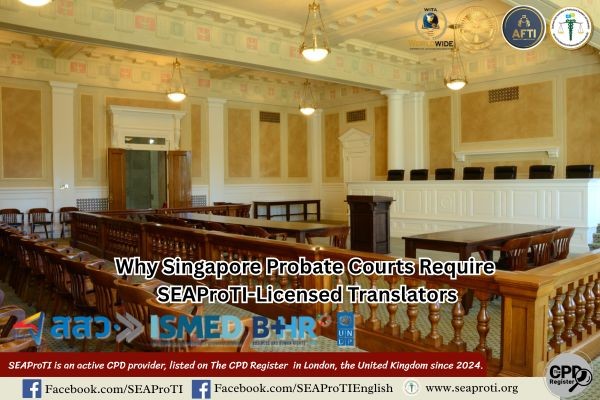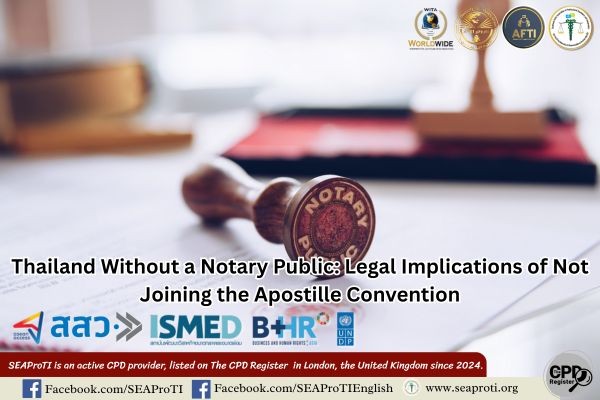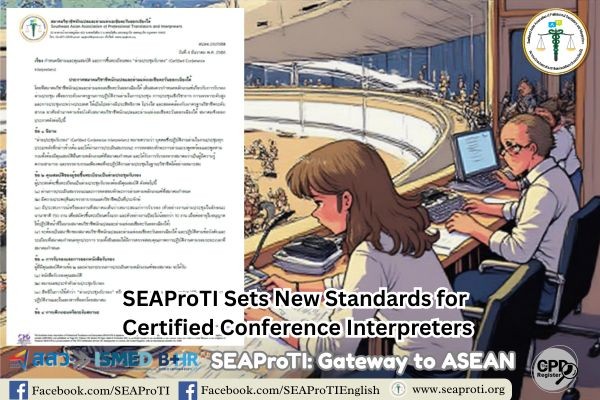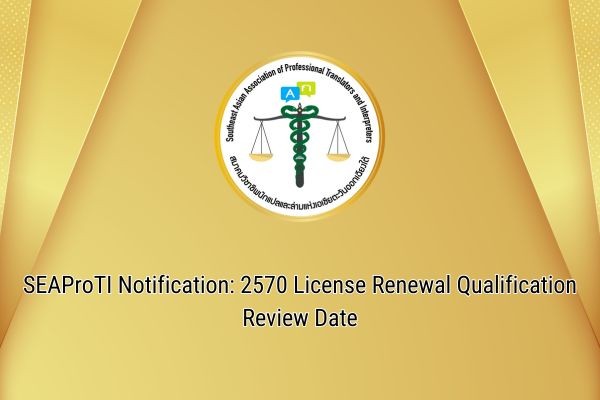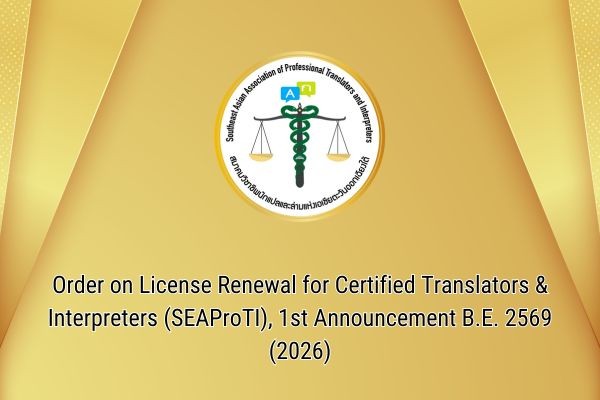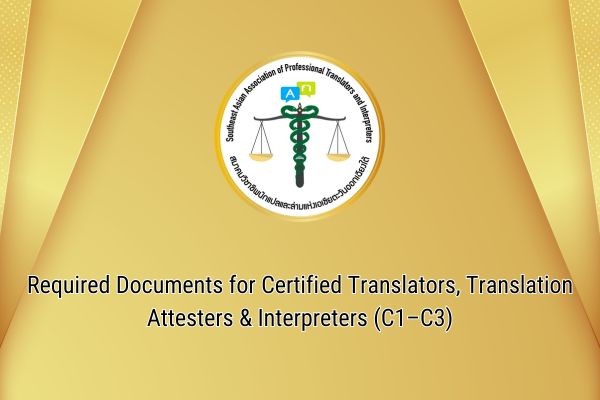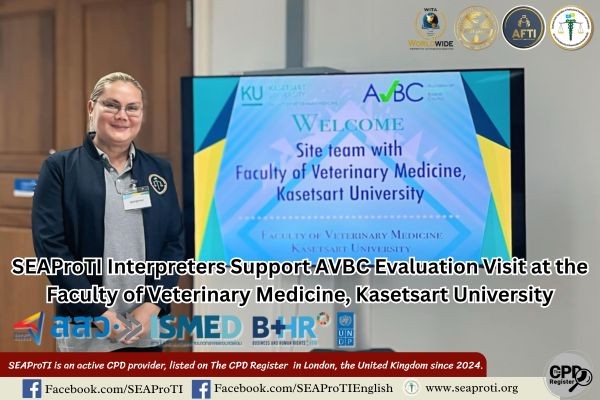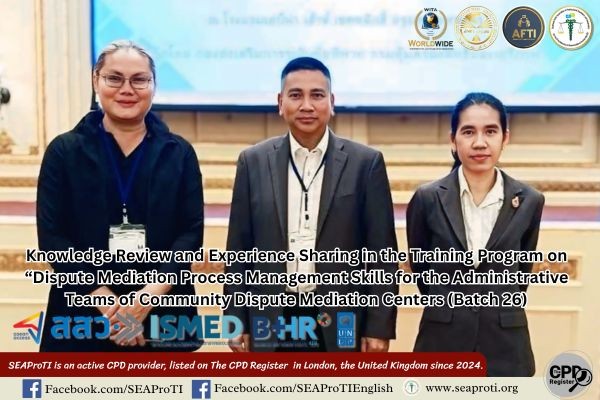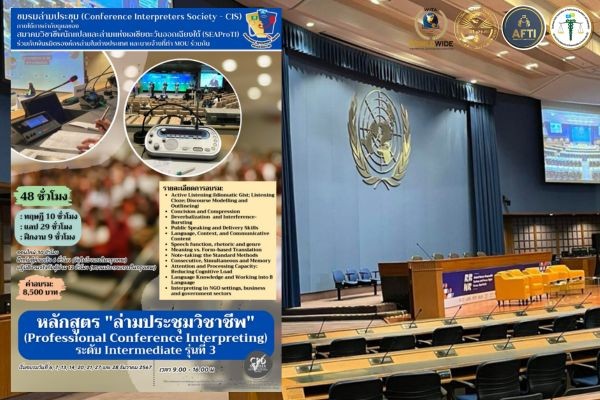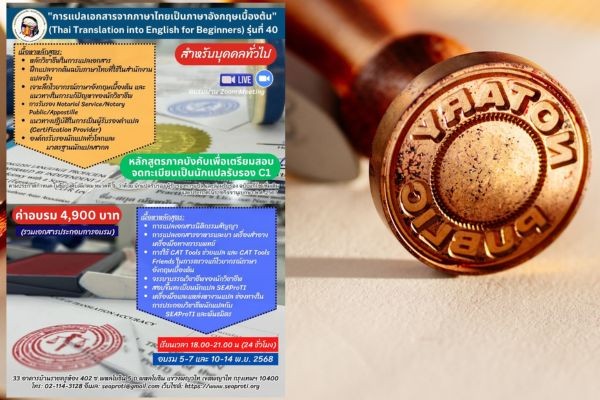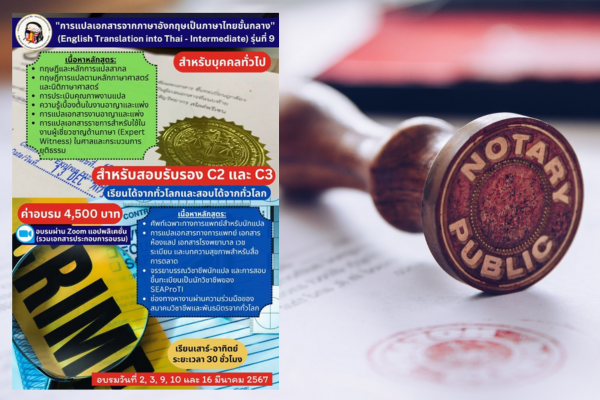Analysis: The Role of the Interpreter in Court Proceedings
Case study of Judge Anthony Howell – Millard – Arraignment (with Spanish Interpreter)
1. Context and Role of the Court Interpreter
This case involves an arraignment hearing, with the defendant being a Spanish speaker requiring a certified court interpreter.
The interpreter’s primary duties include:
-
Accurately and completely interpreting the court’s questions and counsel’s statements for the defendant.
-
Faithfully interpreting the defendant’s responses for the court.
The Interpreter’s Oath, administered by the Court Clerk (“interpret accurately, completely, and impartially…”) reflects the professional and legal standards set by bodies such as the National Center for State Courts (NCSC) and international codes of ethics for court interpreters.
2. Equivalence and Fidelity in Interpretation
2.1 Accurate Translation
The interpreter demonstrates high accuracy and completeness:
-
“Yes, it is correct.” → “Sí, es cierto.”
-
“Do you have any questions?” → “¿Tiene alguna pregunta?”
These examples meet the forensic linguistic principles of accuracy, completeness, and fidelity.
2.2 Pragmatic Adaptation
Some minor adaptations were made:
-
“Compel their attendance by subpoena” → “obligar los que vinieran a la corte por emplazamiento”
While “subpoena” is omitted, “emplazamiento” (summons) is a culturally and legally appropriate equivalent. This pragmatic equivalence is acceptable under court interpreting practice.
3. Linguistic Ambiguity
3.1 Example of Ambiguity
The defendant’s hesitation (“I wonder if I could withdraw my words…”) was translated correctly but highlights potential ambiguity:
-
The interpreter did not request clarification, which would have been advisable under forensic interpreting protocols to avoid misunderstandings.
This shows a practical area for improvement in applying Wadensjö’s dialogic model, which allows for clarifying ambiguous utterances.
4. Impartiality and Ethics
The interpreter did not introduce personal opinions, advice, or biases. The interpreter maintained a strict conduit role, acting solely as a neutral language bridge, in line with Wadensjö (1998) and Berk-Seligson’s standards for forensic interpreting.
5. Discourse Analysis of Turn-Taking
The interpreter effectively managed turn-taking and speaker roles:
-
All participants (judge, defense counsel, defendant) were given full communicative access.
-
The interpreter’s performance enhanced the defendant’s participation rights, contributing to due process and fair trial guarantees under forensic linguistics principles.
Conclusion
| Criterion | Evaluation |
|---|---|
| Accuracy | Excellent |
| Completeness | Excellent |
| Impartiality | Excellent |
| Clarification Handling | Adequate (improvement suggested) |
| Turn-taking Management | Excellent |
| Pragmatic Adequacy | Very Good |
This case represents a best practice example of courtroom interpreting, supporting full linguistic access and participation for the non-English-speaking defendant.
The case further illustrates the critical role of certified court interpreters in safeguarding justice and protecting defendants’ rights.
SEAProTI’s certified translators, translation certification providers, and certified interpreters:
The Southeast Asian Association of Professional Translators and Interpreters (SEAProTI) has officially announced the criteria and qualifications for individuals to register as “Certified Translators,” “Translation Certification Providers,” and “Certified Interpreters” under the association’s regulations. These guidelines are detailed in Sections 9 and 10 of the Royal Thai Government Gazette, issued by the Secretariat of the Cabinet under the Office of the Prime Minister of the Kingdom of Thailand, dated July 25, 2024, Volume 141, Part 66 Ng, Page 100.
To read the full publication, visit: the Royal Thai Government Gazette
บทวิเคราะห์ : บทบาทของล่ามในกระบวนการพิจารณาคดี
กรณีศึกษา: ผู้พิพากษา Anthony Howell – Millard – การพิจารณาคดีเบื้องต้น (พร้อมล่ามภาษาสเปน)
1. บริบทและหน้าที่ของล่าม
จากข้อมูลที่ถอดมา เป็นกระบวนการ arraignment (การฟ้องคดีครั้งแรก) ซึ่งจำเลยเป็นผู้พูดภาษาสเปน และต้องพึ่งพาล่ามภาษาอังกฤษ-สเปน
หน้าที่หลักของล่ามศาลคือ
- แปลข้อความของศาลและทนายให้จำเลยเข้าใจ
- แปลคำตอบของจำเลยให้ศาลรับทราบ
Code of Ethics ที่ถูกกล่าวถึงช่วงต้น (“interpret accurately, completely and impartially”) สะท้อน มาตรฐานจรรยาบรรณของล่ามศาล ตามหลักสากล เช่น
- National Center for State Courts (NCSC) Model Code of Professional Responsibility for Interpreters
- Interpreters’ Oath (ตามที่ Court Clerk อ่านคำปฏิญาณ)
2. การถ่ายทอดความหมาย (Equivalence and Fidelity)
2.1 ตัวอย่างการแปลตรง
ล่ามสามารถรักษาความหมายของต้นฉบับได้อย่างดี เช่น
- “Yes, it is correct.” → “Sí, es cierto.”
- “Do you have any questions?” → “¿Usted tiene alguna pregunta?”
ในเชิง accuracy (ความถูกต้อง) และ completeness (ความครบถ้วน) ถือว่าอยู่ในระดับดี
2.2 การลดทอนหรือเปลี่ยนแปลง (Reduction/Adaptation)
มีการลดทอนรายละเอียดในบางช่วง เช่น
- “call your own witnesses and compel their attendance by subpoena”
→ “llamar a sus propios testigos y obligar los que vinieran a la corte por emplazamiento”
(ตัดคำว่า “subpoena” และแทนด้วย “emplazamiento” ซึ่งมีความหมายใกล้เคียงในบริบทกฎหมาย)
- ถือเป็น pragmatic equivalence ซึ่งยอมรับได้ในทางปฏิบัติของล่ามศาล
3. ปัญหาความคลุมเครือทางภาษาศาสตร์ (Ambiguity)
3.1 ตัวอย่างที่พบ
- จำเลยตอบว่า “Ah, sí lo entiendo, pero no sé si podría retirar esas palabras si yo quiero seguir luchando el caso.”
- ล่ามแปลว่า “Yes, I do understand, but I wonder if I would be able to withdraw my words and I do want to continue fighting this case.”
แม้แปลได้ถูกต้องในเชิงความหมาย แต่ในทาง pragmatics ผู้พิพากษาอาจตีความความลังเลของจำเลยได้หลากหลาย จึงเกิดความจำเป็นในการเลื่อนนัด
ข้อสังเกต: ล่ามไม่ได้ “clarify” หรือ “ask for repetition” ซึ่งตามหลัก forensic interpreting สามารถทำได้หากเนื้อหากำกวม
4. การรักษาความเป็นกลาง (Impartiality)
- ไม่มีหลักฐานว่าล่ามแทรกความคิดเห็นส่วนตัว หรือ แสดงอคติ
- ล่ามทำหน้าที่ conduit (ผู้ถ่ายทอดเนื้อหา) อย่างเคร่งครัด เป็นไปตามทฤษฎี “Conduit Model of Interpretation” (Wadensjö, 1998)
5. ลักษณะเชิงโครงสร้างของการตีความ
การวิเคราะห์ตาม Discourse Analysis พบว่า
- โครงสร้างการสนทนาเป็นแบบ turn-taking ชัดเจน
- ล่ามช่วยให้จำเลยมี participation rights ในกระบวนการพิจารณา (Fair Trial Principle)
- ไม่มีการขัดจังหวะ หรือ overstep role
สรุปผลการวิเคราะห์ (Evaluation)
| เกณฑ์ | ประเมิน |
|---|---|
| Accuracy (ความถูกต้อง) | ดีมาก |
| Completeness (ความครบถ้วน) | ดี |
| Impartiality (ความเป็นกลาง) | ดีมาก |
| Clarification (การสอบถามเพิ่มเติมเมื่อไม่ชัดเจน) | ยังไม่มีหลักฐานการใช้ |
| Turn-taking management (การจัดการลำดับพูด) | ดีมาก |
| Pragmatic adequacy (ความเหมาะสมของบริบท) | ดี |
ข้อเสนอแนะเชิงนิติภาษาศาสตร์
- ควรสอบถามเมื่อจำเลยแสดงความลังเล (ใช้สิทธิขอให้ศาลหรือทนายชี้แจง)
- ฝึกทักษะการจัดการ ambiguity และ pragmatic clarification เพิ่มเติม
บทสรุป
- จากหลักฐานการถอดเทป ล่ามในคดีนี้ปฏิบัติตามมาตรฐานวิชาชีพได้อย่างดี ถือเป็นตัวอย่างของ “Best Practice in Court Interpreting”
- ช่วยให้จำเลยใช้สิทธิในกระบวนการยุติธรรมได้อย่างเต็มที่
- ไม่เพิ่ม bias หรือ influence ในคำให้การ
เป็นกรณีศึกษาที่สะท้อนบทบาทสำคัญของล่ามในกระบวนการยุติธรรมตามหลัก Forensic Linguistics ได้อย่างชัดเจน
[0:04:738 – 0:07:778]
Title Card:
-
Judge Anthony Howell
-
Millard
-
Arraignment (with Spanish Interpreter)
-
March 8, 2023
🎙️ ศาลเริ่มดำเนินการ
[0:13:579]
Court Clerk:
Do you swear or affirm that you will interpret accurately, completely and impartially, using your best skill and judgment in accordance with the standards prescribed by law and the Code of professional responsibility for court interpreters?
[0:24:779]
Interpreter: Yes.
🎙️ เรียกจำเลยและทนาย
[0:27:613]
Judge Anthony Howell: Okay.
[0:31:593]
Mr. Orejuela.
[0:32:923]
Mr.
[0:34:223]
Interpreter: Señor Orejuela?
[0:38:653]
Mr. Orejuela: Buenos días con todos.
[0:40:433]
Interpreter: Good morning everyone.
[0:41:633]
Judge Anthony Howell: Good morning, sir.
[0:44:273]
Mr. Thomas.
[0:45:503]
Interpreter: Señor Thomas?
🎙️ คำแถลงของทนาย
[0:47:483]
Spencer Thomas:
Your honor, we have reached a resolution in this matter and I filed the statement in advance of plea.
[0:54:83 – 0:56:133]
Interpreter:
Su señoría, hemos llegado a una solución con este caso.
Ya he preparado el documento en preparación para la declaración.
[1:00:383]
Spencer Thomas:
I’ve had a chance to go over the statement in advance of plea with my client using an interpreter.
[1:06:313]
Interpreter:
Su señoría, ya yo he podido leer este documento en preparación para la declaración con un intérprete.
[1:13:213]
Spencer Thomas:
I have gone over the rights that he would be waiving and he did indicate to me he understands.
[1:19:563]
Interpreter:
Ya yo le he explicado los derechos que él estaría renunciando al dar esta declaración y él me dice que sí entiende.
[1:27:853]
Spencer Thomas:
My client wishes to go forward and enter this plea.
[1:33:593]
Interpreter:
Mi cliente desea proceder y dar su declaración hoy.
[1:38:893]
Spencer Thomas:
He’s going to plead to some amended counts.
[1:44:443]
Interpreter:
Él se va a declarar culpable a ciertos cargos enmendados.
🎙️ คำถามของศาล
[1:53:590 – 1:56:840]
Judge Anthony Howell:
Mr. Orejuela, is what Mr. Thomas told me correct?
[1:55:640 – 1:59:380]
Interpreter:
Señor Orejuela, lo que el señor Thomas me dice es cierto?
[2:03:240]
Mr. Orejuela: Ah, sí, es cierto.
[2:05:360]
Interpreter: Yes, it is correct.
🎙️ ข้อกล่าวหา
[2:07:430 – 2:59:250]
Judge Anthony Howell:
-
Statement of defendant in support of guilty plea.
-
Count 1: Aggravated assault (3rd degree felony).
-
Count 2: Aggravated burglary (1st degree felony).
-
Count 3: Aggravated assault (3rd degree felony).
-
Is that correct, sir?
[2:12:740 – 3:00:570]
Interpreter:
Estoy leyendo el documento.
Tiene la intención de declararse culpable:
-
Agresión con agravante (tercer grado).
-
Allanamiento con agravante (primer grado).
-
Agresión con agravante (tercer grado).
¿Es cierto, señor?
[3:10:500]
Mr. Orejuela: Sí.
[3:11:620]
Interpreter: Yes.
🎙️ ยืนยันสิทธิ
[3:12:440 – 3:19:330]
Judge Anthony Howell:
You have gone through this statement with your attorney. Is that correct?
[3:20:850]
Interpreter:
Usted ha leído el documento con su abogado, ¿correcto?
[3:38:850]
Mr. Orejuela: Ah, sí.
[3:39:810]
Interpreter: Yes.
🎙️ ศาลถามคำถามสุดท้าย
[3:41:180]
Judge Anthony Howell:
Do you have any questions before we proceed?
[3:44:300]
Interpreter:
¿Tiene alguna pregunta antes de proceder?
[3:51:60 – 4:06:790]
Mr. Orejuela:
I know I made a mistake, but they’re giving me two extra charges. I want you to find more evidence.
[4:08:530]
Interpreter:
I wish for you to look into finding more evidence.
🎙️ ศาลเสนอเลื่อนวัน
[4:21:672 – 4:34:522]
Judge Anthony Howell:
Mr. Orejuela, are you ready to enter plea or do you want more time?
[4:27:562 – 4:39:232]
Interpreter:
¿Está listo para declararse culpable hoy o desea más tiempo para hablar con su abogado?
[4:46:422]
Mr. Orejuela: No, sí está bien.
[4:49:562]
Interpreter: No, we’re okay.
🎙️ ศาลอธิบายสิทธิ
[4:51:442 – 7:36:372]
Judge Anthony Howell:
Explains rights: knowingly and voluntarily, right to trial, right to confront witnesses, call witnesses, 5th amendment, burden of proof, presumption of innocence.
Do you understand?
[4:57:372 – 7:41:322]
Interpreter:
Traducción completa de los derechos y renuncias.
¿Usted entiende todos estos derechos?
[7:50:882]
Mr. Orejuela: Yes, but I wonder if I can withdraw my words and continue fighting this case.
[7:58:792]
Interpreter:
Yes, I understand, but I wonder if I could withdraw my words and continue fighting.
🎙️ ตัดสินใจเลื่อนคดี
[8:09:404]
Judge Anthony Howell:
Mr. Thomas, should I set this for another day?
[8:13:604]
Spencer Thomas: Yes, your honor, in two weeks.
[8:15:244 – 8:18:364]
Interpreter:
Señor Thomas, ¿podríamos programar esto para otro día?
Sí.
[8:20:544 – 8:54:464]
Judge Anthony Howell:
Mr. Orejuela, I won’t take a plea today. Call Mr. Thomas and discuss how to proceed. See you back March 22nd at 8:30.
[Interpreter:
No voy a aceptar la declaración hoy. Llame al señor Thomas para decidir cómo proceder. Nos vemos el 22 de marzo a las 8:30.
[9:06:324]
Mr. Orejuela: Okay, muchas gracias.
[9:08:284]
Interpreter: Okay, thank you very much.
[9:09:314]
Judge Anthony Howell: Thank you.
เกี่ยวกับนักแปลรับรอง ผู้รับรองการแปล และล่ามรับรองของสมาคมวิชาชีพนักแปลและล่ามแห่งเอเชียตะวันออกเฉียงใต้
สมาคมวิชาชีพนักแปลและล่ามแห่งเอเชียตะวันออกเฉียงใต้ (SEAProTI) ได้ประกาศหลักเกณฑ์และคุณสมบัติผู้ที่ขึ้นทะเบียนเป็น “นักแปลรับรอง (Certified Translators) และผู้รับรองการแปล (Translation Certification Providers) และล่ามรับรอง (Certified Interpreters)” ของสมาคม หมวดที่ 9 และหมวดที่ 10 ในราชกิจจานุเบกษา ของสำนักเลขาธิการคณะรัฐมนตรี ในสำนักนายกรัฐมนตรี แห่งราชอาณาจักรไทย ลงวันที่ 25 ก.ค. 2567 เล่มที่ 141 ตอนที่ 66 ง หน้า 100 อ่านฉบับเต็มได้ที่: นักแปลรับรอง ผู้รับรองการแปล และล่ามรับรอง

